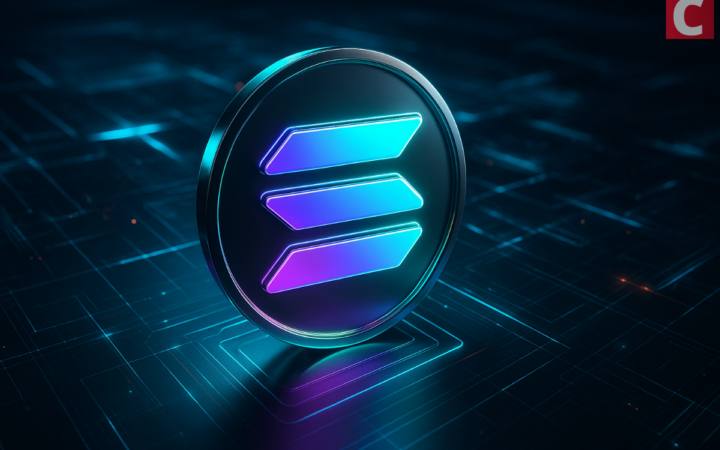
Bybit to Impose Additional 18% GST on Trading Fees for Indian Users from July 7
Crypto tax burden in India to grow as the government is set to impose an additional 18% GST on all crypto trading from July 7.

Crypto tax burden in India to grow as the government is set to impose an additional 18% GST on all crypto trading from July 7.

Hong Kong advances blockchain integration with a new tokenized green bond and ETF stamp duty relief to boost digital finance.

Robert Kiyosaki says he hopes Bitcoin crashes so he can buy more, calling out fear-driven warnings as clickbait distractions.

Bitcoin closed at an all-time high, but a sudden $8.6 billion whale wallet awakening suggests that the rally may be losing steam.

Elon Musk announced plans to create a new political party called the “America Party,” with market players minting meme coins for the same on Solana’s Pump.fun.

BONK is turning heads in the crypto market after a sharp 11% price jump driven by excitement over a potential 2x leveraged ETF launch and a looming 1 trillion token burn.

Ondo Finance’s acquisition of SEC-registered brokerage Oasis Pro marks a significant step toward building compliant tokenized financial infrastructure for institutional markets.

Bitcoin Cash demonstrated relative stability on Friday with only a 1.63% decline to $488, outperforming major altcoins that fell 4-5%.

World Liberty Financial filed a community governance proposal on Independence Day to enable WLFI token trading across decentralized exchanges. The Trump family simultaneously reduced their stake from 75% to 55% to address conflict of interest concerns.

Coinbase has rescheduled its system upgrade for August 2, 2025, which will affect trades and transactions.

After 67% upside over the past week, the current PENGU trading volumes sustain above $1.0 billion, reflecting heightened investor interest.

Ripple Labs recently unlocked 500 million XRP from escrow to complete an earlier release of 500 million tokens.

Minna Bank is exploring the use of Solana-based stablecoins and digital wallets in Japan’s financial ecosystem.

Binance has appointed Gillian Lynch as Head of Europe and the UK, signaling a deeper push into regulated markets.

Polygon records explosive stablecoin address growth in 2025, while POL eyes a potential breakout despite current market pressure.
For the average millennial or at least anyone that pays attention to the business world, the term “cryptocurrency” would not seem like such a strange word. If that is, then the terms Bitcoin, Ethereum or at least Blockchain should ring a bell. One might wonder, why are these terms suddenly so prevalent, especially cryptocurrency news? Computing is getting rather pervasive and the society is leaning towards digital services. The finance world too isn’t spared as the disruption of technology into this sector has fostered the birth and development of Fintech organizations.
These Fintech organizations look to digitize payments and transactions, offering the same services that are currently in existence but in a better, efficient and more effective way.
Blockchain is the network upon which most of these cryptocurrencies operate on. The history of blockchain and bitcoin, in particular, does not have a definite story. In 2009, an individual or group of individuals known to be “Satoshi Nakomoto” developed and published the technology to allow people make digital payments between themselves anonymously without having an external party to verify or authorize the transfer of the currency being exchanged.
Although technologies like this might seem rather complex, understanding how Blockchain works is quite easy, given that one has a basic idea of how networks work. Blockchain is simply a database shared between several users, containing confirmed and secured entries. It is a network, where each entry has a connection to its previous entry.
This technology affords a very secure model whereby every record in the database cannot be tampered with. Apart from the stellar security that this network offers, the transparency and speed at which the network operates give it an edge over the conventional way of conducting transactions.
In simple terms, cryptocurrencies are just monies in digital form, transacted via digital means and over a digital network. The transfer of these currencies is utilized with cryptography and the aforementioned blockchain network. Up until the 2010s, cryptocurrencies were not really known until Bitcoin made its breakout and this gave rise to the birth of new cryptocurrencies.
Cryptocurrencies have had their fair share of bullish and bearish trends, going to show how unstable they can be. The latest cryptocurrency news reports lots of people predicting prices for various cryptocurrencies in the years to come but no-one can say for sure.
Blockchain, on the other hand, is making its way into pervasive computing, especially IoT, giving way for the development of new solutions that embrace data security and transparency.